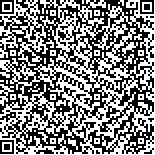王玉涛,汪建华,于志海,王海涛,左长京,田建明.CT引导下经皮穿刺射频消融术治疗骨样骨瘤及术后影像学评价[J].中华物理医学与康复杂志,2017,39(3):214-217
扫码阅读全文

|
| CT引导下经皮穿刺射频消融术治疗骨样骨瘤及术后影像学评价 |
|
| |
| DOI: |
| 中文关键词: 骨瘤,骨样 导管消融术 穿刺术 诊断显像 |
| 英文关键词: Osteomas Catheter ablation Punctures Diagnostic imaging |
| 基金项目: |
|
| 摘要点击次数: 2107 |
| 全文下载次数: 3547 |
| 中文摘要: |
| 目的探讨CT引导下经皮穿刺射频消融术(RFA)治疗骨样骨瘤及影像学评价的临床应用价值。 方法应用CT引导下RFA治疗37例骨样骨瘤患者,肿瘤主要发生于股骨和胫骨,患者均表现为局部疼痛症状(34例患者疼痛位于病灶部位,3例位于病灶远侧的关节区域),其中32例夜间加剧。术后1周,第1、3个月行CT和(或)MRI检查,观察射频消融区域的密度、信号改变及邻近组织恢复情况,结合疼痛视觉模拟评分(VAS)评价手术短期疗效。 结果37例患者手术均成功,术后2d~l周内均能恢复日常活动,无肢体功能障碍,术中、术后均未发生严重并发症。术后1个月射频区域CT表现为低密度的骨质缺损,3个月骨质缺损范围缩小,外周增厚的反应骨稍变薄。术后1周37例患者射频区域MRI T2WI高信号较术前降低,T1WI呈低信号;1个月时,20例患者(54.1%)T2WI高信号较术后1周降低,T1WI低信号范围缩小,17例患者(45.9%)信号恢复正常;3个月时,10例患者(27.0%)T2WI高信号较术后1个月降低,T1WI低信号范围缩小,27例患者(73.0%)信号恢复正常。术后VAS评分较术前明显降低,差异均有统计学意义(P<0.05)。 结论CT引导下RFA治疗骨样骨瘤是一种安全、有效的微创方法,动态影像学随访对短期疗效评价具有十分重要的价值。 |
| 英文摘要: |
| Objective To explore the clinical value of CT-guided radiofrequency ablation (RFA) and imaging follow-up for patients with osteoid osteoma. Methods Thirty-seven patients with osteoid osteomas were selected. Their tumors occurred mainly in the femur and tibia (16/37, 13/37) with local pain aggravated at night in 32 of the cases. They were treated with CT-guided RFA. One week, 1 month and 3 months after the surgery, CT and MRI examinations were conducted to observe the density of the ablated area, any density (signal) changes and the recovery of adjacent tissues. A visual analogue scale (VAS) was used to assess the perceived pain of the patients. Results All of the patients went through the operation successfully and resumed unrestricted normal activity within 2 d to 1 week without complications. Field CT showed a low density of bone defects one month after the ablation, with the bone defect narrowing and peripheral thickened reactive bone thinning slightly 2 months later. One week after the RFA treatment the MRI′s T2WI signal was lower than before the treatment and the T1WI signal was low. One month after the RFA the T2WI high signal of 20 of the patients (54.1%) had decreased and the T1WI low signal had narrowed compared to one week after the operation. The signals of the other 17 cases (45.9%) had returned to normal. Three months after the operation the T2WI high signal of 10 of the 20 patients (27%) had decreased further and their T1WI low signal had also narrowed further compared to one month after the operation, with a total of 27 then normal. After the operation, the average VAS score decreased significantly compared to before the operation. ConclusionCT-guided RFA is a safe and effective minimally invasive method for the treatment of osteoid osteoma. Dynamic imaging is very useful for assessing the therapeutic effect in the short term. |
|
查看全文
查看/发表评论 下载PDF阅读器 |
| 关闭 |